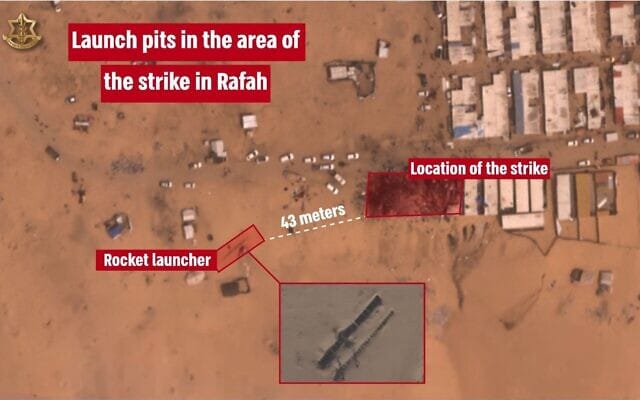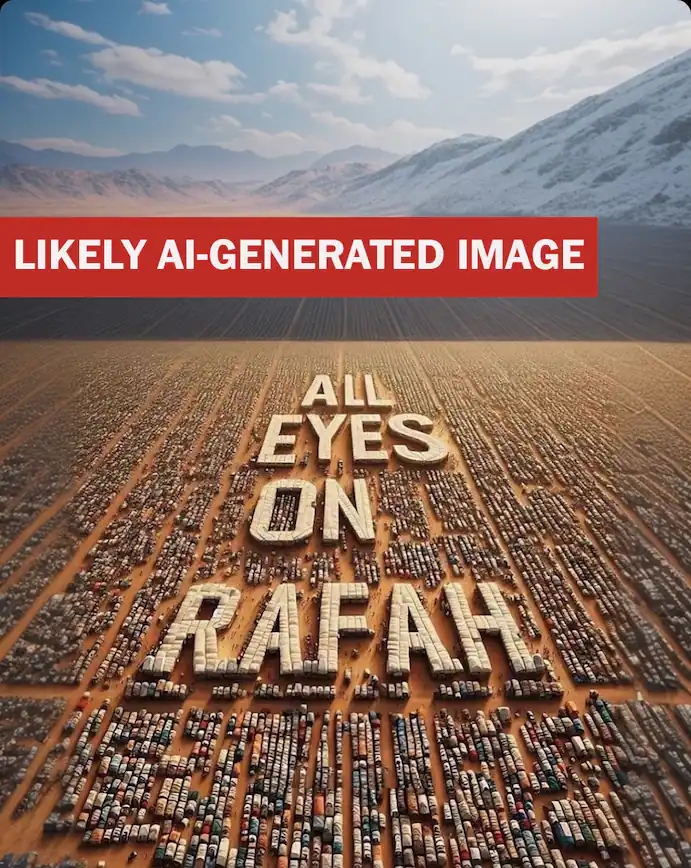IDF Didn’t Target a Safe Zone in Rafah. So What Happened?

On the night of May 26, an Israeli airstrike struck the Tel al Sultan neighborhood in Rafah. According to the Hamas-run health ministry in Gaza, at least 45 people were killed as buildings in an area housing displaced Palestinians were set on fire.

.
The area affected by the strike is less than 200 meters from the United Nations Relief and Works Agency's compound in the north of Rafah. Geolocated footage and satellite imagery show that the strike destroyed buildings right next to a sign identifying Kuwaiti Al-Salam Camp 1. It's uncertain whether the buildings are part of the camp, but Kuwaiti Al-Salam Camp 1 is known to provide housing for Palestinians displaced by the ongoing conflict.

During much of the conflict, the surrounding area has been filled with tents and sheds that house displaced people. In recent weeks, the number of these structures has decreased as Palestinians fled ahead of Israel's ground offensive in Rafah.
Footage filmed by Palestinian journalist Alamuddin Sadiq at the scene of the strike appears to indicate which specific munition was used, 1,000 of which were supplied by the US to Israel in 2023.

A sign and other distinctive features visible in the footage recorded in the immediate aftermath allowed it to be matched to a daytime recording from the same scene.
Landmarks visible in the daylight made it possible to determine the exact location of the strike and verify pieces of footage recorded at night in the same place.
The footage is ultimately verified by showing numerous bodies being pulled from the wreckage of destroyed buildings. In one video, a man can be seen carrying the body of a decapitated child.
Satellite imagery captured by Planet Labs PBC on 27 May shows four buildings were destroyed in this strike.
The Israeli account
On May 28, a senior Israeli military official stated that the deaths of civilians occurred during an attempt to target two senior members of Hamas. The official also mentioned that the location of the incident is close to an area where rockets are launched.
Rear Admiral Daniel Hagari reported that two 17kg (37lb) munitions were utilized. He also mentioned that a large part of the damage was due to a subsequent fire that could not have been caused solely by munitions of this size, and that this is currently under investigation.
The weaponry used in this strike

Footage filmed by Palestinian journalist Alamuddin Sadiq at the scene of the strike appears to indicate which specific munition was used.
Recorded the day after the strike, the fragments resemble the tail section of a GBU-39 Small Diameter Bomb (SDB).
According to Rahul Udoshi, a weapons specialist at the defence intelligence company Janes, the fragment "appears to be tail section of GBU-39 SDB (of Israeli Air Force stock)." Noting the similarity, Udoshi pointed out "the screw and cut section next to that", which he described as an "exact match".

Reviewing the same image, Chris Cobb-Smith, a former British army artillery officer and director of Chiron Resources, also concluded that it matched a GBU-39 SDB, describing the munition as "an advanced, state-of-the-art weapon".
According to the Sipri Arms Transfers Database, Israel received 1,000 of these munitions from the US as recently as 2023. Bloomberg, reporting at the time, states that this delivery was accelerated following the 7 October Hamas attack
Hagari stated that "our aerial surveillance was filming before the strike to minimize civilian harm" in response to the loss of innocent life. The Israeli military shared footage showing four people near the targeted building just before it was hit.
Humanitarian zone
Prior to its ground offensive in Rafah, Israel produced a map marking an evacuation area and humanitarian zone.

The area targeted lies between these two zones, in the neighborhood numbered by the Israeli government as 2372.
Meanwhile, as Israel worked to debunk the lies of Hamas propaganda they launched a very successful social media campaign.
The image, first posted as an Instagram Story by a relatively obscure account, shows endless rows of what appear to be refugee tents — some of which spell the words “all eyes on Rafah” — against a backdrop of snowy mountains.

Realism is not the focus; the image evokes a vast refugee camp while serving as a visual backdrop for a simple text-based message at its center.
The person who posted it used an Instagram feature called Add Yours that explicitly encourages others to share it in their own Stories, putting their own spin on it if they like. As of Wednesday evening, the original image had been shared more than 45 million times, while innumerable copies proliferated elsewhere on social media. It is, in short, a meme.
Here, the AI serves to deceive or embellish. The result is a sterile abstraction that lacks the ability to provoke or upset. Now, for better or worse, they’re also the latest form of social media politics.

